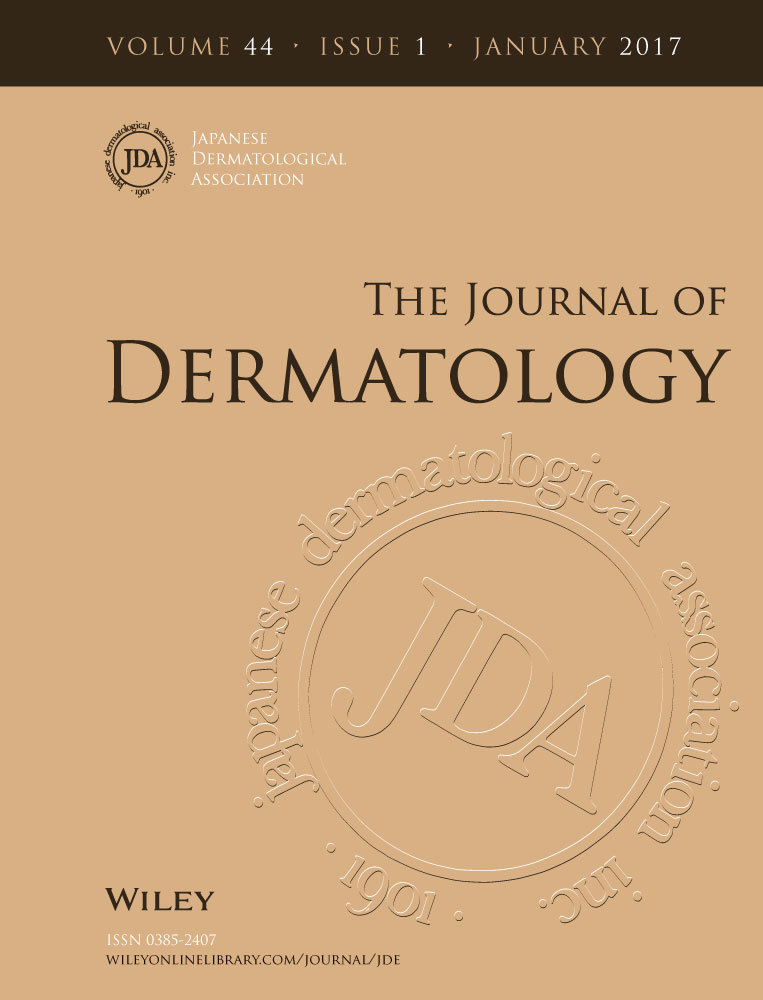Mutation analysis of IL36RN gene in Japanese patients with palmoplantar pustulosis
Abstract
Loss-of-function mutations of the IL36RN gene, encoding interleukin-36 receptor antagonist (IL-36Ra), have been reported as major pathogenic causes of generalized pustular psoriasis (GPP), especially in cases lacking previous histories of psoriasis vulgaris. Palmoplantar pustulosis (PPP), which is traditionally included among GPP-related diseases, has a controversial association with IL36RN. While a negative view about the said association has been recently published from Europe, variations of the IL36RN gene show great ethnic differences. In this study, we performed mutation analysis of the IL36RN gene in 88 Japanese patients with PPP and identified three types of single base substitutions in four patients, namely, p.Pro82Leu in two patients, p.Asn47Ser in one and p.Thr123Met in another. All variations were heterozygous and different from previous European reports. We compared the immunohistochemical findings of IL-36Ra on patients with and without variation of the IL36RN gene; however, no significant differences were observed. Our data and the previous European study suggest that PPP is not associated with mutations of the IL36RN gene.




